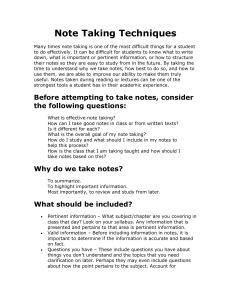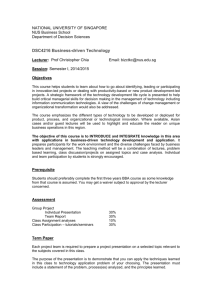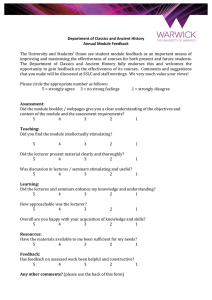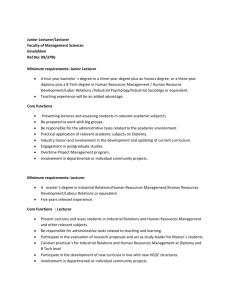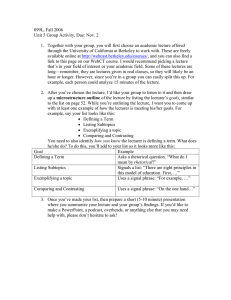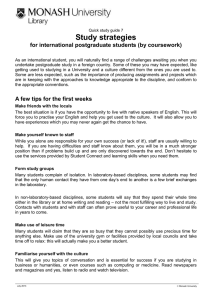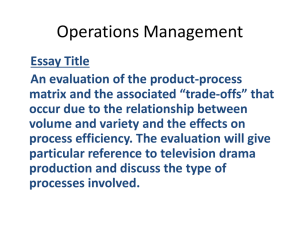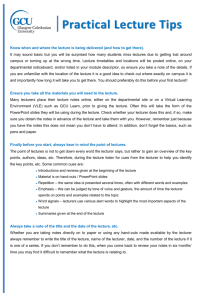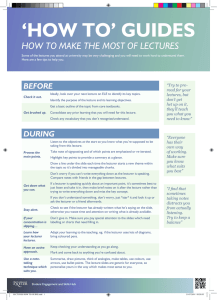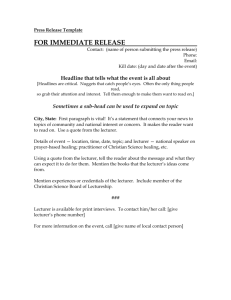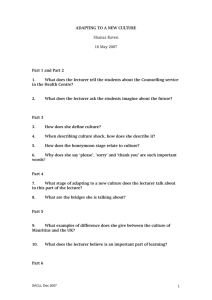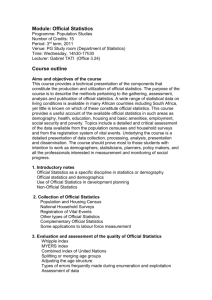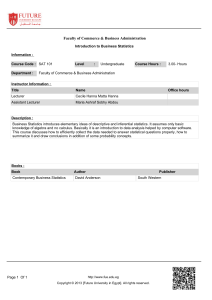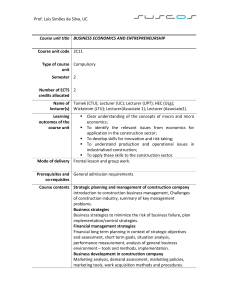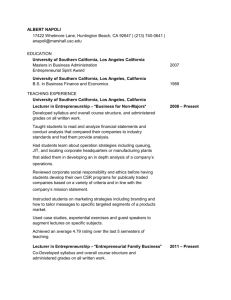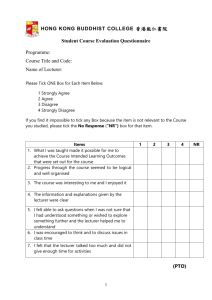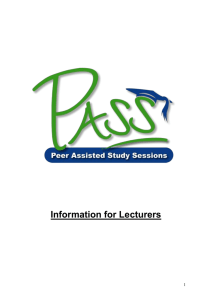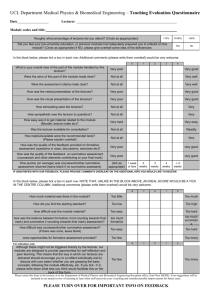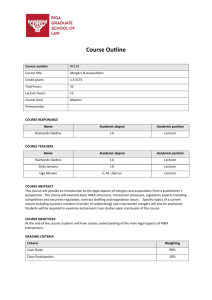Your Turn: make notes summarising an essay
advertisement
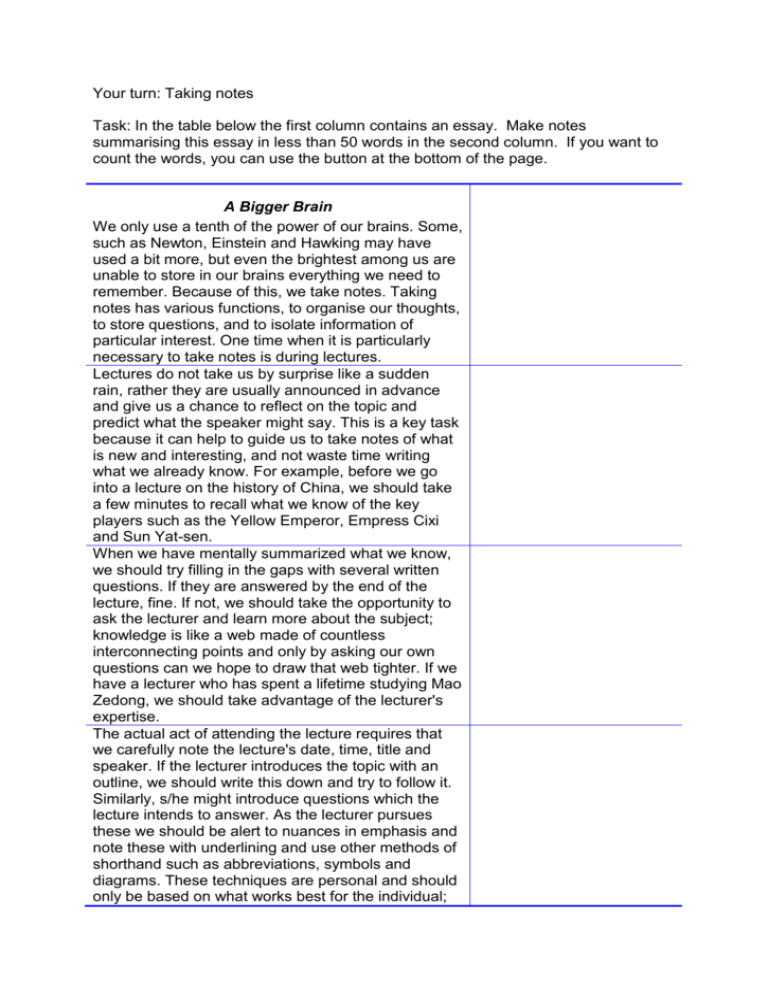
Your turn: Taking notes Task: In the table below the first column contains an essay. Make notes summarising this essay in less than 50 words in the second column. If you want to count the words, you can use the button at the bottom of the page. A Bigger Brain We only use a tenth of the power of our brains. Some, such as Newton, Einstein and Hawking may have used a bit more, but even the brightest among us are unable to store in our brains everything we need to remember. Because of this, we take notes. Taking notes has various functions, to organise our thoughts, to store questions, and to isolate information of particular interest. One time when it is particularly necessary to take notes is during lectures. Lectures do not take us by surprise like a sudden rain, rather they are usually announced in advance and give us a chance to reflect on the topic and predict what the speaker might say. This is a key task because it can help to guide us to take notes of what is new and interesting, and not waste time writing what we already know. For example, before we go into a lecture on the history of China, we should take a few minutes to recall what we know of the key players such as the Yellow Emperor, Empress Cixi and Sun Yat-sen. When we have mentally summarized what we know, we should try filling in the gaps with several written questions. If they are answered by the end of the lecture, fine. If not, we should take the opportunity to ask the lecturer and learn more about the subject; knowledge is like a web made of countless interconnecting points and only by asking our own questions can we hope to draw that web tighter. If we have a lecturer who has spent a lifetime studying Mao Zedong, we should take advantage of the lecturer's expertise. The actual act of attending the lecture requires that we carefully note the lecture's date, time, title and speaker. If the lecturer introduces the topic with an outline, we should write this down and try to follow it. Similarly, s/he might introduce questions which the lecture intends to answer. As the lecturer pursues these we should be alert to nuances in emphasis and note these with underlining and use other methods of shorthand such as abbreviations, symbols and diagrams. These techniques are personal and should only be based on what works best for the individual; during art lectures, some students take notes by making quick sketches from each slide shown to the class. But the most important technique in note taking is what not to do. We should not be tape recorders, copying everything without any critical judgement. At the end of a lecture, it is too common to see a roomful of students frowning over a dozens of pages of notes. A note is a reference, a small reminder, and no good if our big brains will not take the time to read them or cannot even find them later. Count Words

